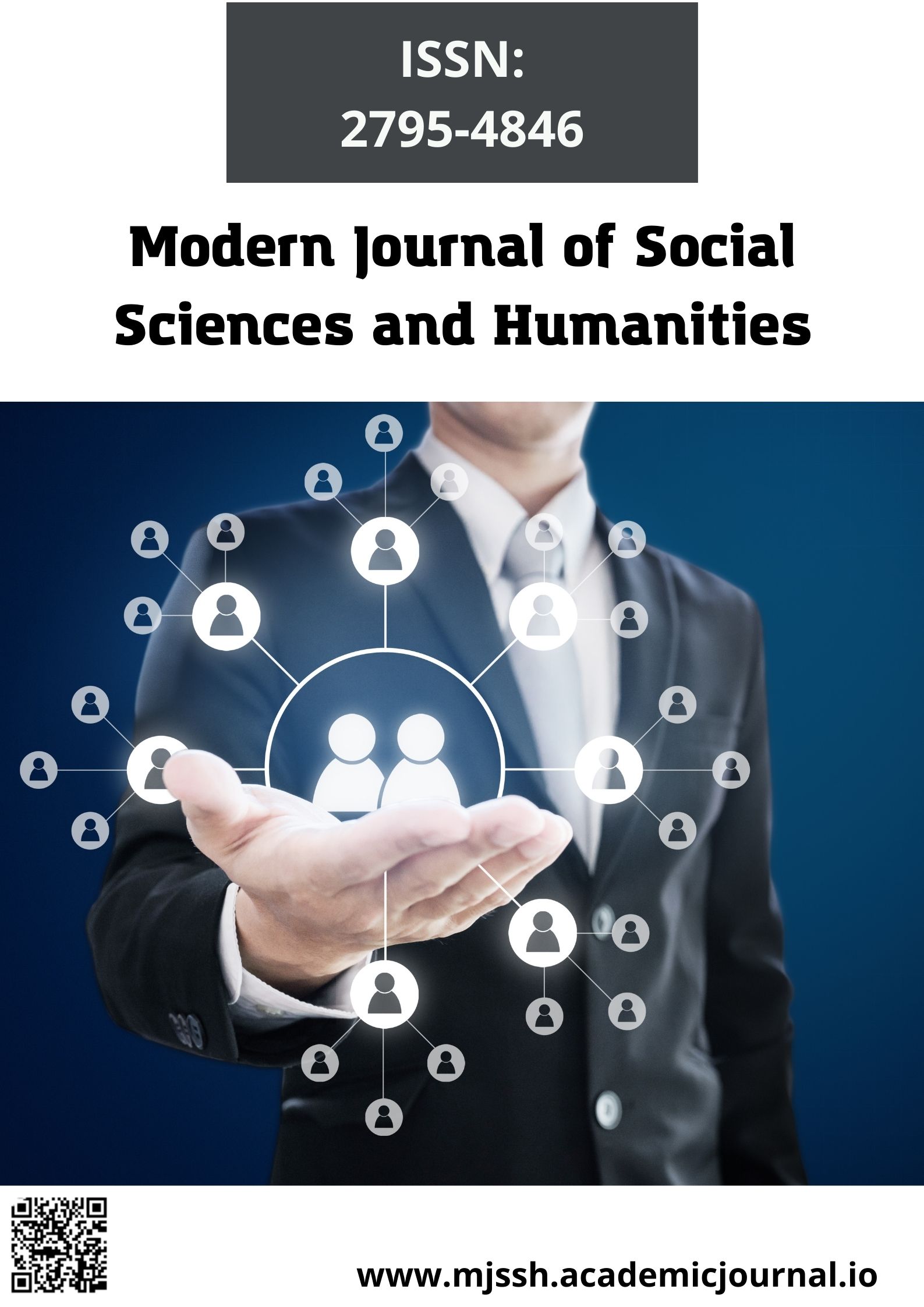The Role of Women in Managing Protein Food in Households of Stunting Case in Kulonprogo
DOI:
https://doi.org/10.51699/mjssh.v3i2.754Keywords:
individual, organizational, importance of system capacitiesAbstract
Food is a basic need of human life, so any problems around food are very complex. One of the things that have changed is the awareness of protein consumption, both animal and vegetable sources. Lifestyle changes also contribute to changing people's consumption behavior at various social levels. In addition, the role of women in family food management, especially decision-making in purchasing, serving, and consuming food is also influential. Economic limitations are a problem in fulfilling nutrition or diverse food consumption habits, families with stunted toddlers tend not to like diverse foods, especially vegetables and foods derived from protein. Stunting is usually also found in families whose protein consumption is relatively low, either animal protein (meat, eggs, milk, etc.) or vegetable protein (tofu, tempeh, etc.). Kulonprogo is a district in Daerah Istimewa Yogyakarta (Yogyakarta Special Region) that participates in efforts to prevent stunting. According to the 2019 Indonesian Toddler Nutrition Status Survey (ITNSS) data, the stunting rate in Yogyakarta Special Region was 21.0 percent and in 2021 it fell by 17.3 percent. Efforts need to be made to reduce this condition from year to year. This study seeks to approach the problem-solving of this condition. The purpose of this study was to analyze the role of women in managing protein food in households with stunting cases. The study was approached with the behavior of women in purchasing animal and vegetable protein foods in Kulonprogo. The result of the research showed that together the factors of household’s income, women's income, women's age, women's education, number of household members, number of children under five in the family, and information dummy had a significant effect on protein consumption by 52.4% and 47.6% influenced by other factors outside the model. Partially, the most influential factors in protein consumption are household’s income and women's income.
References
D. Muchtadi, Introduction to Nutrition Science. Bandung: Alphabeta, 2009.
R. Umaroh and A. Vinantia, “Analysis of Animal Protein Consumption in Indonesian Households,” Indones. J. Econ. Dev., vol. Special Edition for Paper JEPI, pp. 22–32, 2018.
UNICEF, “World Child Status 2019 Children, Food, and Nutrition.” [Online]. Available: https://www.unicef.org/indonesia/id/status-anak-dunia-2019
Infodatin, The Situation of Short Toddlers in Indonesia. Jakarta: Ministry of Health, 2016.
S. Y. Mozin and S. P. Husain, “Strategies to Improve Stunting Prevention and Handling Capability Through Development of Village Potential Amid the Covid-19 Pandemic,” J. Sibermas Synergy Community Empower., pp. 182–207, 2020.
D. Wahyuni, L. Purnastuti, and Mostofa, “Analysis of the Elasticity of Three Foods Sources of Animal Protein in Indonesia,” J. Econ., vol. 12, no. 1, pp. 45–53, 2016.
J. F. Engel, R. D. Blackwell, and P. W. Miniard, Consumer Behavior. Jakarta: Binarupa Script, 1994.
Riyadi, “People’s Eating Habits in Relation to Diversification of Food Consumption,” in Proceedings of the Food and Nutrition Symposium and the Fourth Congress of Indonesian Food and Nutrition, Jakarta, 2003.
Sugiyono, Metode Penelitian Kuantitatif, Kualitatif, dan R & D. Bandung: Alfabeta, 2014.
M. Nazir, Research Methods. Jakarta: Ghalia Indonesia, 1988.
Soekartawi, Agribusiness: Theory and Application. Jakarta: Higher Education Book Division, P.T. Raja Grafindo Persada, 2010.
Kerlinger, Behavioral Research Methods. Yogyakarta: Gadjah Mada University Press, 2007.
Usmiati Sri et al., “Characteristics of Cow’s Milk Curd Using Probiotic Bacteria Starter,” JITV, vol. 16, no. 2, pp. 141–153, 2011.
S. Hamidah, A. Sartono, and H. S. Kusuma, “Differences in Consumption Patterns of Protein Source Foods in Coastal Areas, Lowlands, and Highlands,” University of Muhammadiyah Semarang, Semarang, 2017.
N. Piggott and T. L. Marsch, “Does Food Safety Information Impact U.S. Meat Demand?,” J Am. J. Agric. Econ., pp. 154–174, 2004.
R. E. Lipsey, Econometric. New York: Harper and Row Publisher, 1993.
W. H. Greene, Econometric Analysis, 5th ed. Upper Saddle River, Prentice Hall: Pearson Education Inc., 2003.
J. P. Gittinger, Economic Analysis of Agricultural Projects, 2nd ed. Jakarta: University of Indonesia Press-Johns Hopkins, 1986.
HIKS, “Food Processing Management.” [Online]. Available: http://www.foodprocess/ucdhryyy.i123
I. M. Yuliara, Multiple Linear Regression Module. Bali: Faculty of Mathematics and Natural Sciences, Udayana University, 2016.
P. Kotler and G. Armstrong, Principles of Marketing, 12th ed., vol. 1. Jakarta: Erlangga, 2008.
A. Juliandi, S. Manurung, and B. Satriawan, Processing business research data with SPSS. Medan: AQLI Research and Scientific Writing Institute, 2018.
F. R. David, Strategic Management Concepts, 12th ed. Jakarta: Salemba Empat, 2011.
K. Trifiyanto and D. Artati, “Study of factors Influencing Decisions to Use Online Ojek in Kebumen and Purworejo Regencies,” in Proceedings of the 2019 Untidar Faculty of Economics National Seminar, 2019.
N. Nursamsi, R. Nurmalina, and A. Rifin, “Study of Protein Source Commodity Demand System in Six Provinces of Indonesia,” Indones. Agribus. J. J. Indones. Agribus., vol. 7, no. 2, pp. 141–156, 2019.
K. Rahmadhita, “Stunting Problems and Prevention,” Sci. J. Health Sandi Husada, vol. 9, no. 1, pp. 225–229, 2020.
F. Rangkuti, SWOT Analysis of Dissecting Business Case Techniques. Jakarta: Gramedia Pustaka Utama, 2001.
D. S. Rachmawati, “The Relationship Between Protein Intake and Stunting in School Children at Madrasah Ibtidaiyah Muhammadiyah Kartasura,” Muhammadiyah University of Surakarta, Surakarta, 2018.
Downloads
Published
How to Cite
Issue
Section
License
Copyright (c) 2024 Dwi Aulia Puspitaningrum, K. Hikmah, J. Purwanta

This work is licensed under a Creative Commons Attribution 4.0 International License.





